Occupational environment monitoring at the factory mining iron ore
99,000 ₫
Note: The above price is calculated for one sample, the price may fluctuate depending on the area of the environment to be monitored and the movement of the market. For more accurate price support, please refer to the quotation table or contact directly with our consulting staff.
Environmental monitoring of iron ore mining factories is a session of collecting, analyzing, and evaluating factors in the workplace that may be harmful to the health of workers.
Table of Contents
Toggle1. Overview of the iron ore mining factory
a. What is an iron ore mining factory?
Factory for iron ore mining is a production facility used to mine, crush, separate, and process iron ore from mines. Iron ore is the main raw material for the production of steel and related products.

b. Production stages in the iron ore mining factory
The process of iron ore mining usually includes the following stages:
- Mining: The process of mining iron ore begins with searching and exploiting iron ore mines. This is the stage of extracting ore from the ground through methods such as open-pit mining, underground mining, or river mining.
- Crushing and grinding: Iron ore is crushed and ground to reduce the size of the ore, facilitating the separation and processing stages later. Crushers and grinders are used to turn iron ore into powder or small pieces.
- Ore separation: After iron ore is crushed and ground, the ore separation process takes place to separate iron ore from other impurities present in the ore. Ore separation methods include physical or chemical processes such as flotation, magnetic separation, or smelting.
- Processing: After the iron ore has been separated, it is processed to produce different iron and steel products. The processing stages include roasting the iron ore, smelting pig iron, and other steps to produce steel and corresponding iron and steel products.

c. Types of machinery used in the iron ore mining factory
In the iron ore mining factory, many types of machinery and equipment are used to perform the mining and processing stages of iron ore. Below are some common machines in the iron ore mining industry:
- Crushers and grinders: Used to crush and grind iron ore into powder or small pieces. Types of crushers and grinders include jaw crushers, vertical shaft crushers, ball mills, vertical mills, and high-speed grinders.
- Ore separators: Used to separate iron ore from other impurities present in the ore. Common ore separators include magnetic separators, flotation machines, and gravity separators.
- Pig iron smelting machines: Used to process separated iron ore into pig iron. Pig iron smelting machines typically include blast furnaces, Hoa Binh method furnaces, and electric arc furnaces.
- Roasting machines and kilns: Used to roast iron ore to produce molten iron or molten pig iron. Common roasting machines and kilns include blast furnaces, spring furnaces, electric arc furnaces, and thermal furnaces.
- Transportation systems: Include machinery and equipment used to transport iron ore, impurities, and processed products during production. Transportation systems include conveyors, pumping systems, pipeline systems, and loading and unloading equipment.

d. What occupational diseases can workers in iron ore mining factories face?
Workers in iron ore mining factories may suffer from some occupational diseases due to exposure to harmful environmental factors. Below are some common occupational diseases in the iron ore mining industry:
- Lung diseases: People working in iron ore mining environments may be exposed to ore dust and chemicals present in the mining and processing stages. Inhaling ore dust and chemical fumes can cause respiratory problems such as pneumonia, asthma, and other lung diseases.
- Skin diseases: Contact with chemicals during iron ore mining may cause skin problems such as dermatitis, skin irritation, and other skin injuries. In addition, exposure to many types of dirt and other irritants in the mining environment may also cause skin problems.
- Cardiovascular diseases: The working environment in iron ore mining factories can be particularly harsh and stressful. Factors such as high work pressure, extreme temperature environments, and hard labor may contribute to the development of cardiovascular problems such as high blood pressure, coronary artery disease, and myocardial infarction.
- Spinal and bone diseases: Work related to iron ore mining often requires heavy physical activities, such as lifting and transporting heavy materials. This can put pressure and cause spinal injuries and other bone problems such as spinal degeneration, joint degeneration, and injuries due to occupational accidents.
- Other causes: In addition to the above diseases, workers in the iron ore mining industry are also at risk of other causes such as occupational accidents, injuries due to incidents, and diseases caused by exposure to other toxic substances during work.
To protect health and prevent occupational diseases, it is necessary to implement occupational safety and protection measures, including the use of personal protective equipment, compliance with safe working procedures, periodic health checks, and ensuring a safe and well-ventilated working environment.

e. Common types of iron ore in the world
There are many common types of iron ore in the world. Below are some types of iron ore that are widely mined and used in the industry:
- Hematite iron ore: Hematite is a common type of iron ore with high iron content, usually more than 50 percent. Hematite iron ore has a bright red color and is commonly used to produce pig iron and steel.
- Magnetite iron ore: Magnetite is also an important type of iron ore with high iron content, usually from 25 percent to 40 percent. Magnetite iron ore has magnetic properties and is commonly used as raw material in pig iron production.
- Limonite iron ore: Limonite is a type of iron ore with low iron content, usually from 20 percent to 50 percent. It often has a brown color and is used in steel production.
- Siderite iron ore: Siderite is a relatively common type of iron ore, with iron content from 48 percent to 65 percent. It usually has a brown color and is used in pig iron and steel production.
- Goethite iron ore: Goethite is a type of iron ore with low iron content, usually from 20 percent to 40 percent. It often has a yellow-brown color and is used in steel production.
2. Overview of occupational environmental monitoring services
a. What is occupational environmental monitoring at an iron ore mining factory?
Occupational environmental monitoring (or workplace environmental measurement) at an iron ore mining factory is the activity of collecting, evaluating, and analyzing measurement indicators of occupational environmental factors at the iron ore mining factory, in order to take timely measures, minimize environmental impacts on workers’ health, and prevent occupational diseases. Occupational environmental monitoring is a mandatory requirement for iron ore mining factories.
Occupational environmental monitoring plays the most important role in caring for, protecting, and improving workers’ health because the main resource of enterprises and the direct creator of profit for enterprises is the worker. Workers who are regularly exposed to risk factors and occupational hazards beyond permissible standards will be affected in health and may develop occupational diseases.
REGISTER FOR OCCUPATIONAL ENVIRONMENTAL MONITORING SERVICE
b. Occupational environmental monitoring program of Nam Viet
The occupational environmental monitoring program of Nam Viet is a program researched by monitoring engineers in the field of occupational safety and environmental protection. With the goal of ensuring workers’ health and safety, this program uses modern measurement methods to monitor air quality, water, microclimate factors, physical factors, dust, and more in the workplace environment. This is a very important program in ensuring a safe working environment and protecting workers’ health.
In addition, the occupational environmental monitoring program of Nam Viet also plays an important role in researching and developing new solutions to improve workplace environmental quality. With the dedication and professionalism of the monitoring experts, the exclusive monitoring program of Nam Viet is becoming a breakthrough in the field of occupational safety management and environmental protection in Vietnam.

c. Standardization in workplace environmental measurement procedures
Standardization in the workplace environmental measurement procedures of Nam Viet is a very important aspect in ensuring the quality of measurement results. To ensure the accuracy and reliability of measurement results, this program uses recognized standards and standardized procedures of Ho Chi Minh City Department of Health. This ensures that the collected data will be used with high reliability in the evaluation of the workplace environment and in making decisions on workplace environmental improvements to protect workers’ health.
These standardized procedures also ensure that the measurement results are carried out by a team of monitoring specialists with high qualifications and many years of experience, helping managers and experts to trust the results from An Toan Nam Viet and make accurate, valuable decisions in protecting workers’ health and the environment.
By applying standardization in workplace environmental measurement procedures, Nam Viet demonstrates its commitment to ensuring a safe working environment and protecting workers’ health, while also positively contributing to the development and improvement of occupational safety management and environmental protection quality in Vietnam.
d. Monitoring report results at the iron ore mining factory
The occupational environmental monitoring results are prepared according to form number 04 Appendix III issued together with Decree 44/2016/ND-CP and are made into 02 copies: 01 copy sent to the labor facility that signed the contract to carry out occupational environmental monitoring and 01 copy kept at the organization performing occupational environmental monitoring.
The storage period for occupational environmental monitoring results is regulated by law as permanent record storage.

e. Frequency of occupational environmental monitoring according to legal regulations
According to clause 2 of Article 18 of the Law on Occupational Safety and Hygiene 84/2015/QH13, the employer must organize occupational environmental monitoring to evaluate harmful factors at least once a year.
f. Deadline for submitting occupational environmental monitoring report results according to legal regulations
The deadline for submission is before December 31 each year, enterprises belonging to production facilities are required to submit occupational environmental monitoring report results to the local Department of Health where the production facility or business has its headquarters and where workers are working.
When there are changes in technology processes, production processes, or when renovating or upgrading labor facilities that may generate new hazardous factors affecting workers’ health, enterprises in production facilities must update occupational hygiene records related to harmful factors that require occupational environmental monitoring.
g. Regulations on penalties for violations of occupational environmental monitoring for employers
According to Article 27 of Decree No. 12/2022/ND-CP dated January 17, 2022 on administrative penalties in the fields of labor, social insurance, and Vietnamese workers working abroad under contracts.
- Clause 2: A fine of 2,000,000 – 5,000,000 VND for employers who do not publicly announce to workers at the workplace where occupational environmental monitoring is conducted and where hazardous factors are inspected, evaluated, and managed immediately after the occupational environmental monitoring results and hazardous factor assessment and management results at the workplace are available.
- Clause 3: A fine of 20,000,000 – 40,000,000 VND for employers who fail to conduct occupational environmental monitoring to control health hazards to workers as prescribed by law.
- Clause 4: A fine of 40,000,000 – 60,000,000 VND for employers who collude with organizations conducting occupational environmental monitoring to commit fraud in occupational environmental monitoring activities but not to the extent of criminal prosecution.
3. Harmful environmental factors for workers in the iron ore mining factory
Work in the iron ore mining factory may face many harmful environmental factors that can affect the health of workers. Below are some environmental factors that may cause harm:
- Ore dust: The process of mining and processing iron ore generates ore dust in the working environment. Ore dust contains chemical compounds such as silica, asbestos, lead, and heavy metals that can harm the respiratory system and cause lung diseases such as silicosis and pneumoconiosis.
- Vapors and toxic gases: During the mining and processing of iron ore, vapors and toxic gases such as methane gas, hydrogen sulfide gas, carbon dioxide gas, and other harmful chemicals may be released. Exposure to or inhalation of these gases in poorly ventilated environments can cause health problems such as respiratory depression, tinnitus, fatigue, and poisoning.
- Noise: Work in the iron ore mining factory often comes with loud noise from machinery and mining processes. Continuous and high-intensity noise can cause hearing problems, insomnia, stress, and negative impacts on overall health.
- Soil impacts: Iron ore mining may affect the surrounding soil environment, causing changes such as subsidence, landslides, and pollution.
- Water pollution: Iron ore mining activities may cause water pollution due to chemical leakage from mining and processing. These pollutants may harm the water sources that workers are exposed to or use.
REGISTER FOR OCCUPATIONAL ENVIRONMENT MONITORING SERVICE
4. Measures to improve the working environment in the iron ore mining factory
Improving the working environment in the iron ore mining factory is an important process to protect the health and safety of workers. Below are some measures to improve the working environment in the iron ore mining industry:
- Ensure ventilation and dust extraction system: Install efficient ventilation and dust extraction systems to remove ore dust and chemicals during mining. This helps reduce the risk of exposure to ore dust and protects the respiratory system of workers.
- Use personal protective equipment: Provide personal protective equipment such as masks, helmets, protective glasses, and ear protection to prevent exposure to harmful substances, dust, and noise.
- Safety training and supervision: Ensure workers are trained in occupational safety, recognizing and preventing hazards during work. Conduct periodic inspections and supervision to ensure compliance with safety procedures and proper use of personal protective equipment.
- Noise control: Implement noise control measures such as using soundproof barriers, providing noise-canceling headphones, and limiting exposure time to loud noise.
- Waste and wastewater management: Apply processes and technologies to treat waste and wastewater to reduce environmental pollution. Strictly control discharges and comply with relevant environmental regulations.
- Ensure safety in transportation and storage: Apply safety procedures in the transportation and storage of iron ore to prevent accidents and environmental pollution.
- Promote monitoring and evaluation: Conduct regular monitoring and assessment of the impact of iron ore mining on the environment and workers’ health. Improve and adjust environmental protection measures based on evaluation results.
- Periodically organize occupational environment monitoring in factories, collect and analyze harmful factors for workers, thereby adjusting and reducing the risk level to prevent occupational diseases for them.
5. Benefits of periodic monitoring of the iron ore mining factory
An Toan Nam Viet provides businesses with great benefits when using occupational environment monitoring services according to Decree 44/2016/ND-CP on the management and control of harmful factors in the working environment that affect workers.
- Businesses can proactively control harmful factors at workshops or factories.
- Receive consulting and recommendations on measures to reduce harmful factors and improve the quality of the working environment.
- Indirectly protect human resources, the main factor in the development of businesses.
- Reduce the harmful effects of occupational diseases on human health, thereby reducing treatment costs in the future.
- Improve workers’ health, leading to ensured and maintained product quality and output.
- Comply with labor safety laws, avoiding legal risks.
- Create reputation and professionalism in all aspects, thereby elevating the brand for businesses.
The environmental monitoring service of An Toan Nam Viet is the solution to minimize the harm of occupational diseases, contributing to creating a fresh and high-quality working environment.

6. National occupational environment monitoring center
Occupational environment monitoring center of An Toan Nam Viet is a professional unit in monitoring and measuring the quality of the working environment across all provinces and cities in Vietnam. With a team of experienced monitoring specialists, the center uses modern measuring equipment to ensure accuracy and reliability.
In addition to providing monitoring services, the center also supports customers in planning, handling, and tracking occupational environment issues. With the motto “customer-centered”, the center focuses on customer satisfaction, meeting all customer needs, and committing to providing the best solutions for businesses.
REGISTER FOR OCCUPATIONAL ENVIRONMENT MONITORING SERVICE
With investment in technology, equipment, and human resources, the monitoring center of An Toan Nam Viet has become one of the reputable units in the field of occupational environment monitoring in Ho Chi Minh City with the following goals:
- We always value brand reputation and the quality of our service products.
- We provide customers with the best and most suitable solutions possible.
- Together with a team of experienced Masters and Engineers, with the desire to protect the environment and bring benefits to businesses.
- By choosing the Environmental Monitoring team of An Toan Nam Viet, your company will receive professional service from experts in the monitoring field. At the same time, you will receive the best cost benefits.
The process of occupational environment monitoring at An Toan Nam Viet includes the following basic steps:
- Before conducting occupational environment monitoring, our company always ensures that the equipment used for monitoring is adjusted and calibrated according to legal regulations.
- Strictly follow the occupational environment monitoring process committed to the Department of Health.
- Honestly report occupational environment monitoring results to employers.
- In cases where the occupational environment monitoring results do not ensure worker safety, An Toan Nam Viet will support by providing solutions, and the workplace will implement as follows:
- Implement measures to improve working conditions to minimize the impact of harmful factors and prevent occupational diseases.
- Organize health examinations to detect occupational diseases and work-related diseases early for workers in unsafe environments.
- Provide in-kind benefits for workers according to labor laws.

7. Occupational environment monitoring quotation
To help businesses conduct occupational environment monitoring in a professional and effective manner, An Toan Nam Viet provides customers with a service quotation for occupational environment monitoring with quality and reasonable cost.
- Our monitoring quotation provides detailed information on the prices of the monitoring services we offer, including costs related to transportation, measurement, analysis, and reporting of results. Customers can be assured of the accuracy and reliability of the monitoring reports we provide.
- We are committed to always offering the most competitive and reasonable prices in the market, and we are also always ready to provide quick and professional advice to answer all questions about monitoring services.
- With the monitoring quotation of An Toan Nam Viet, customers can easily choose service packages that suit their needs. We are committed to bringing the highest satisfaction to customers with professional service quality.
1 review for Occupational environment monitoring at the factory mining iron ore
No comments yet

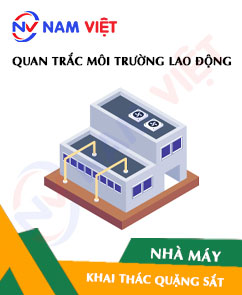
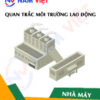
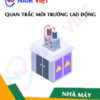
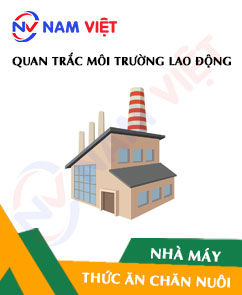
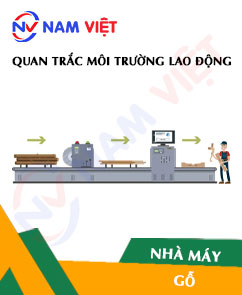


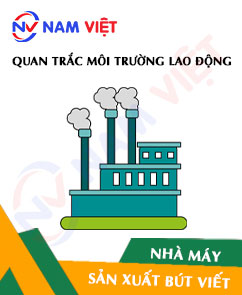
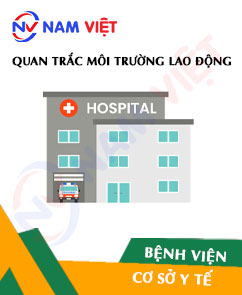


maituyet.cuong12
Professional labor environment monitoring unit